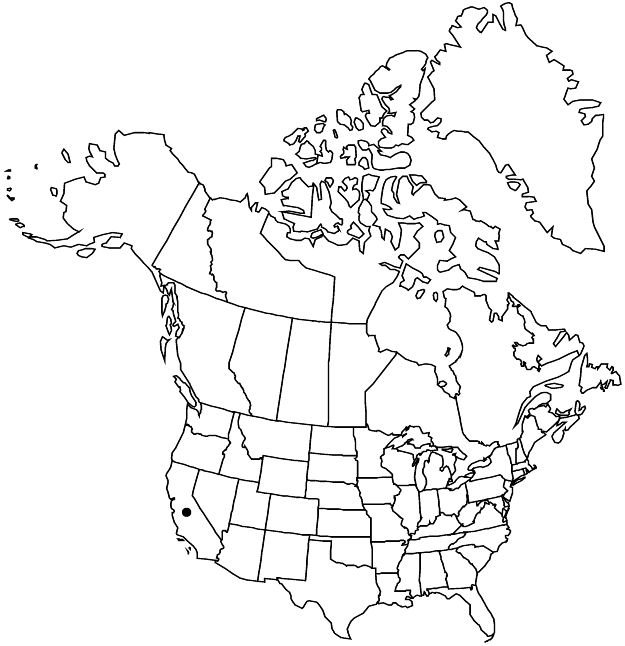Sidalcea stipularis
Four Seasons 4(4): 20, fig. 16. 1974.
Herbs, perennial, 0.3–0.7 m, not glaucous, with slender, elongated rhizomes to 1 cm diam. Stems single or in dense patches, erect, solid, hairy, hairs simple, spreading, bristly. Leaves cauline, evenly arrayed on stem; stipules asymmetric-ovate and auriculate, 10–20 × 10–20 mm, width exceeding stem diam.; petioles of proximal leaves 7–10 cm, gradually reduced distally to 2 cm, 1–1 1/2 times blade length proximally to 1/2 blade length distally; blade ovate to elliptic, unlobed, usually (4–)7–8 × (2.5–)4–5 cm, reduced distally, base cordate, margins crenate-serrate, apex acute to rounded, surfaces glabrous abaxially, sparsely hirsute adaxially. Inflorescences erect, capitate, ± dense, calyces overlapping, unbranched, 2–10-flowered, not elongate, not 1-sided, 3–5 cm; proximalmost bracts involucrelike, similar to stipules in size and shape, narrowed to linear distally, usually divided to base, 10–20 mm, longer than pedicels, equaling or slightly shorter than calyx. Pedicels 1–2 mm; involucellar bractlets 3, 8–12 mm, equaling or longer than calyx. Flowers bisexual; calyx 8 mm, sparsely to densely bristly, sometimes also stellate-hairy; petals pink, usually pale-veined, 15 mm; staminal column 4–6 mm, hairy; anthers white; stigmas 7 or 8. Schizocarps 4–5 mm diam.; mericarps 7 or 8, 2 mm, glabrous, smooth, back with medial line, mucro absent. Seeds 1.9 mm.
Phenology: Flowering Jun–Aug.
Habitat: Marshes
Elevation: 700 m
Discussion
Of conservation concern.
Sidalcea stipularis is the most distinctive and easily recognized species of Sidalcea; it is also among the rarest. It is listed as endangered in California. The ovate unlobed leaves are found in no other Sidalcea species. The relatively large stipules, bracts, and involucellar bractlets are also unique in Sidalcea, making the inflorescence appear involucrate. Studies by K. Andreasen and B. G. Baldwin (2001, 2003) suggested that it is one of the basal species within Sidalcea, and it has probably been long isolated. Sidalcea stipularis is known from the northern Sierra Nevada foothills in Nevada County.
Sidalcea stipularis is in the Center for Plant Conservation’s National Collection of Endangered Plants.
Selected References
None.
